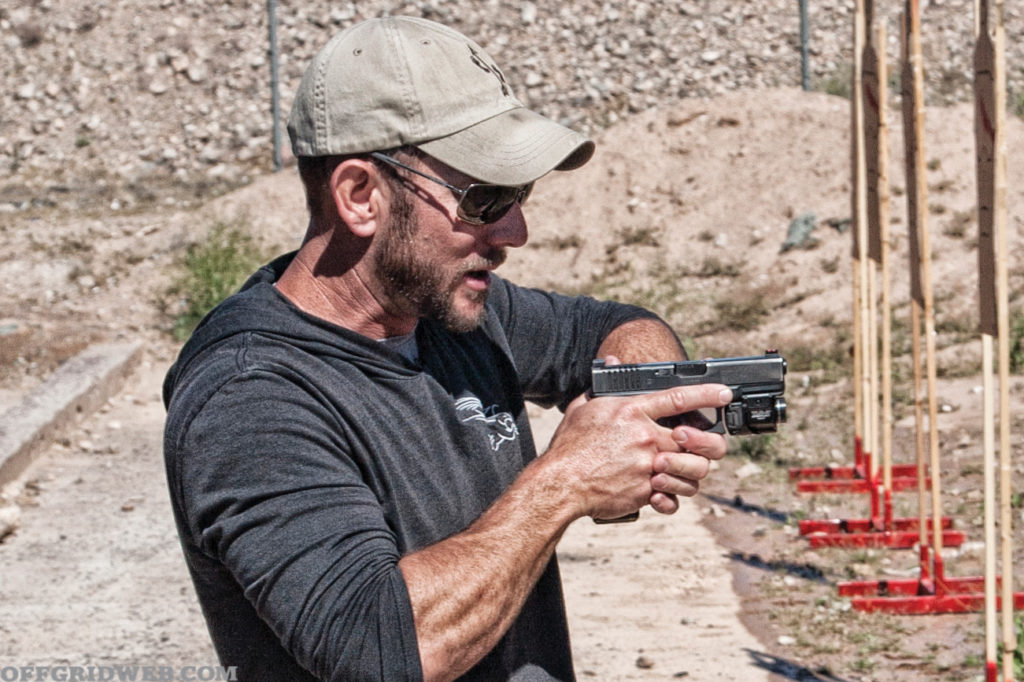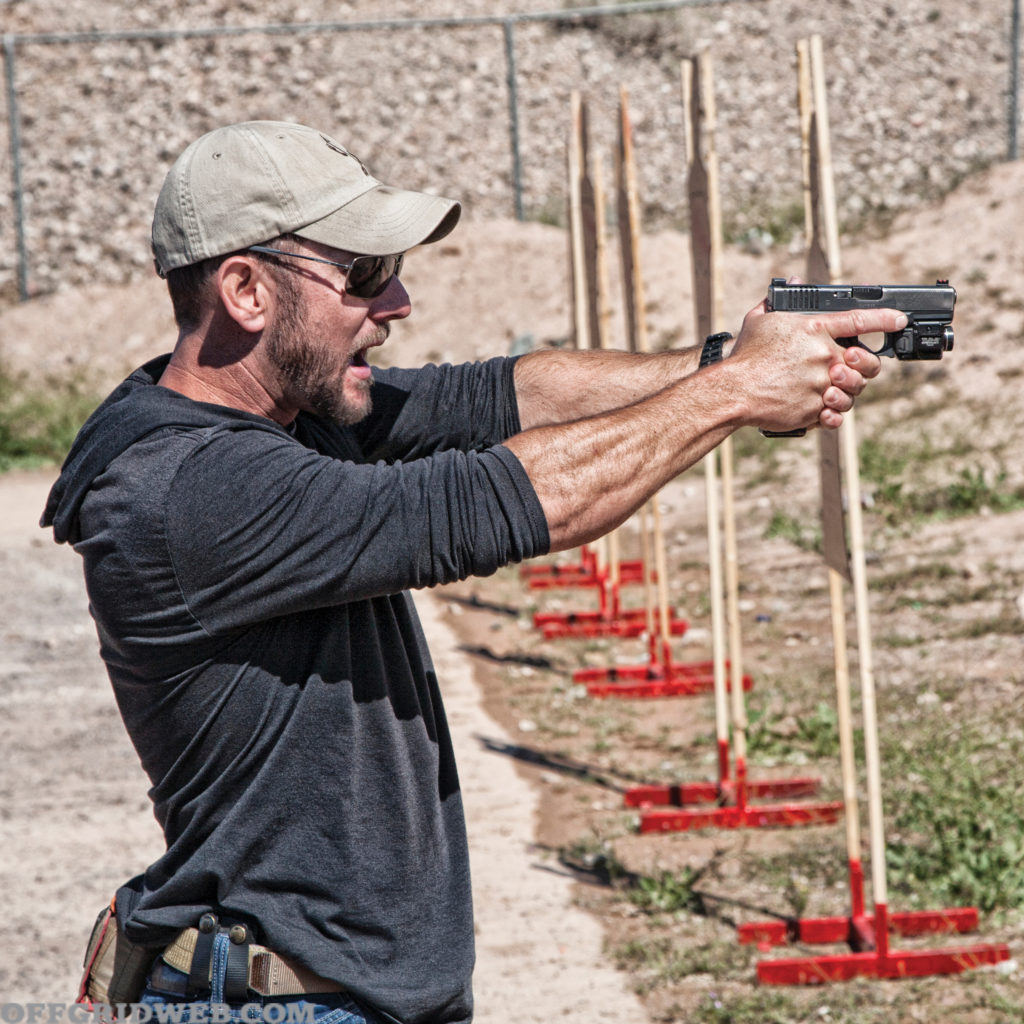RECOIL OFFGRID Preparation Independence Training: Shooting vs Fighting
Knowing how to shoot doesn’t necessarily mean you know how to fight. You might be able to drill holes in a bull’s-eye consistently at the range, but real fights generally don’t involve an assailant standing motionless, 20 yards away, in front of a dirt berm. They’re high-stress confrontations in less-than-ideal circumstances, and they often happen with only a few feet separating you from your attacker. Luckily, Independence Training in Arizona has a course to augment shooting skill with fighting knowledge.
In order to learn more about integrating shooting skills into a real self-defense situation, I attended a 1.5-day Close Contact Handgun course hosted by Independence Training in Arizona. Instructors Cecil Burch and Glen Stilson began the class at an unusual time: 7 p.m. on a Friday. As the sun set, students paired up in a dimly lit parking lot and practiced approaching one another with realistic lines such as “Hey man, can you spare some change?”
For those being approached, one of the first lessons was related to footwork — backing up blindly can lead to stumbling; moving in an arc around the oncoming individual is a safer way to keep your distance. While moving continuously, students practiced verbal de-escalation in three stages: ask (“I don’t have any change. Can you please give me some space?”), tell (“I’ve got nothing for you. Stay back.”), and command (“I SAID STAY BACK! Don’t come any closer!”).

Escalating tone, volume, and body language will make your defensive posture clear to the individual and any nearby witnesses. If they continue to approach despite direct commands, it’s likely that they’re looking for more than just some spare change. This information can be combined with other pre-threat indicators you observe, such as nervous glances or furtive hand movement, to determine if a fight is imminent. Much like a heart attack, identifying the telltale symptoms and reacting quickly will greatly increase your survival rate in a self-defense situation.
On the morning of day two, students lined up at the range with our EDC guns holstered. Burch and Stilson demonstrated four positions for drawing from concealment:
 1. Clear cover garment; securely grip weapon.
1. Clear cover garment; securely grip weapon.
2. “The Elevator:” Draw weapon up until side of thumb is indexed against chest. Keep wrist straight, elbow high, and shoulder muscles tense. Muzzle will be angled downward.
3. “The Escalator:” Move weapon across chest, joining with support hand at center of sternum and remaining close to body. Muzzle should be level.
4. Fully extend arms into a normal shooting stance. 
On the range at Independence Training students stood directly in front of cardboard targets, drew and fired from position two, stepped back and fired from position three, and stepped back again to fire from position four (see photos). This taught us how to switch stances based on an attacker’s distance, rather than defaulting to full extension and allowing the assailant to grab or deflect the weapon.
After about 200 rounds of live fire, the remainder of the day was spent in role-playing scenarios that incorporated all of the skills taught in the class. Students were provided with Ultimate Training Munitions (UTMs) — chalk pellets fired hard enough to sting and leave a visible mark on clothes. In these scenarios, some hostiles backed down after verbal commands, while others drew concealed weapons and started shooting. Difficulty ramped up as additional characters entered the scene, acting as bystanders, good Samaritans, or accomplices.
No student walked away unscathed, and valuable lessons were learned from every welt. As it turns out, it’s a bit more challenging to shoot the bull’s-eye when it’s returning fire. For more information on future classes from Stilson and Burch and more at Independence Training, go to independencetraining.com and iacombatives.com.
Keep an eye out for a recap of another training experience in the next edition of The Final Weapon. Until then, get out there and work on sharpening your own skills — when the time comes to use them, you’ll be glad you did.
 STAY SAFE: Download a Free copy of the OFFGRID Outbreak Issue
STAY SAFE: Download a Free copy of the OFFGRID Outbreak Issue
No Comments